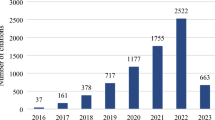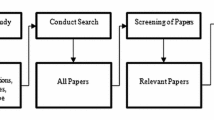Abstract
The solution of an optimum problem of scheduling with n workpieces and m machine tools represents an optimum schedule of putting pieces on machines. In turn, the schedule is defined by an optimum collection of m permutations out of n objects, i.e., the vector permutation π = (π1, ..., π m ), where each permutation π i (1 ≤ i ≤ m) points up the sequence of working of all pieces on the ith machine. In this case, to each admissible schedule there must correspond an integral point from the m-dimensional Euclidean space of permutations (or, which is practically the same, the permutation out of numbers {1, 2, ..., mn}. In an effort to seek an optimum schedule, use is made of the notion of a metric space in the set of admissible schedules and the justified methodology of the search for an optimum schedule. A few metric spaces are described and analyzed and their comparative effectiveness is investigated for the solution of a different-route problem of scheduling.
Similar content being viewed by others
REFERENCES
Golenko, D., Statisticheskie modeli v upravlenii proizvodstrom (Statistical Models in Production Control), Moscow: Statistika, 1972.
Tanaev, V. and Shkurba, V., Vvedenie v teoriyu raspisanii (Introduction to the Theory of Schedules), Moscow: Nauka, 1975.
Mut, J. and Tompson, G., Kalendarnoe planirovanie (Scheduling), Moscow: Nauka, 1966.
Rinnooy Kan, A.H.G., Machine Scheduling Problems. Hague: Nijhoff, 1976.
Golenko, D., Using Metric Spaces in Optimal Calendar Planning, Ann.New York, Acad.Sci., 1985, vol. 452, pp. 11–22.
Golenko-Ginzburg, D. and Sims, J., Using Permutation Spaces in Job-Shop Scheduling, Oper.Res., 1992, vol. 9, pp. 183–193.
Page, E., On Monte Carlo Methods in Congestion Problems: Searching for Optimum Discrete Situations, Oper.Res., 1965, vol. 13, pp. 291–299.
Author information
Authors and Affiliations
Rights and permissions
About this article
Cite this article
Golenko-Ginzburg, D.I., Lyubkin, S.M., Rezer, V.S. et al. Using Metric Spaces in Optimum Scheduling. Automation and Remote Control 63, 1515–1523 (2002). https://doi.org/10.1023/A:1020098624562
Issue Date:
DOI: https://doi.org/10.1023/A:1020098624562




